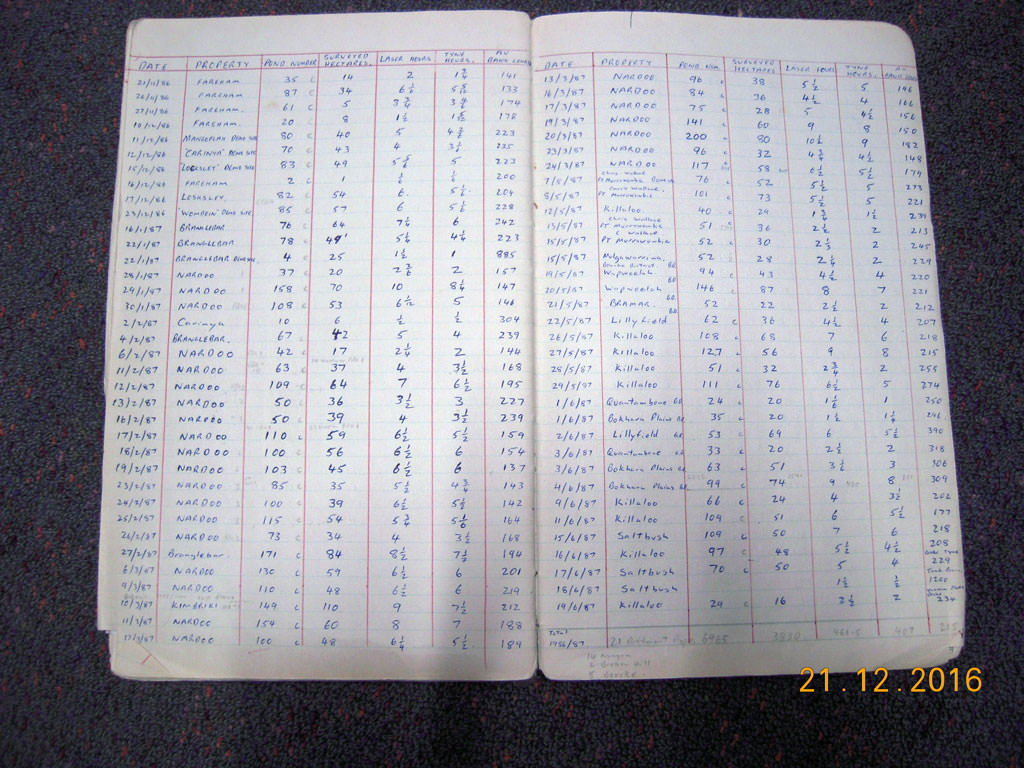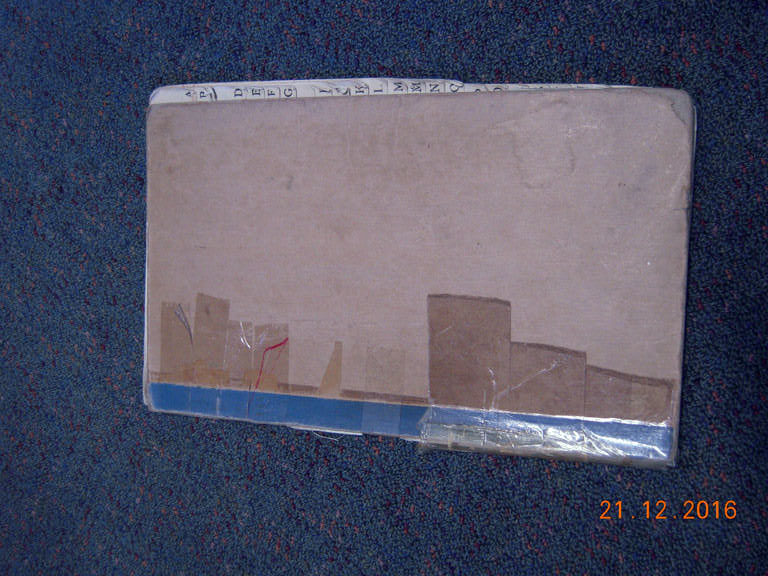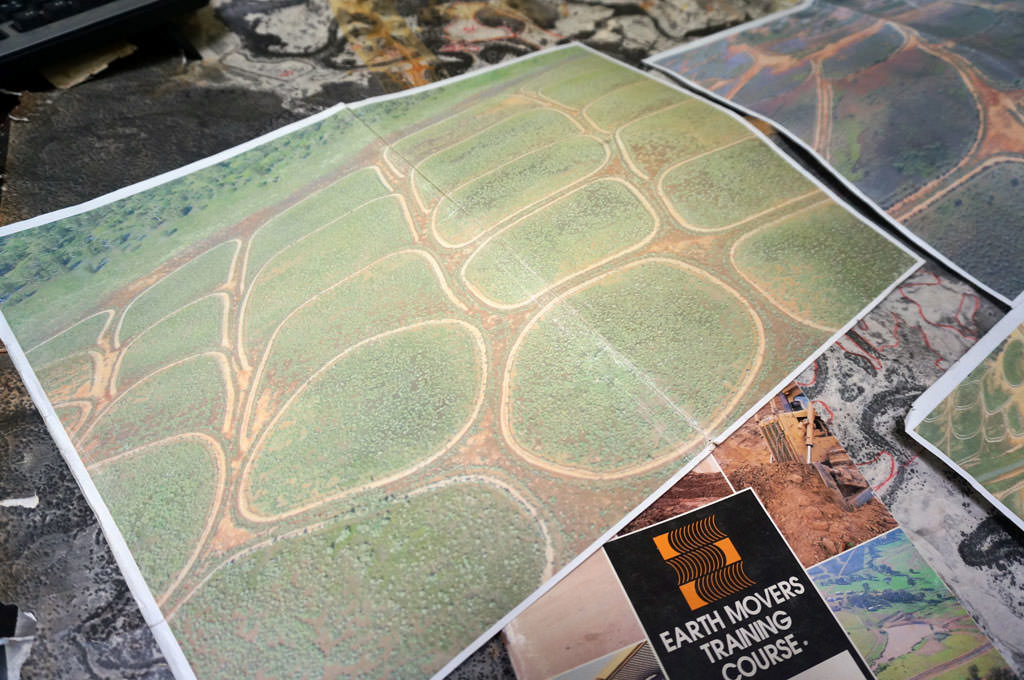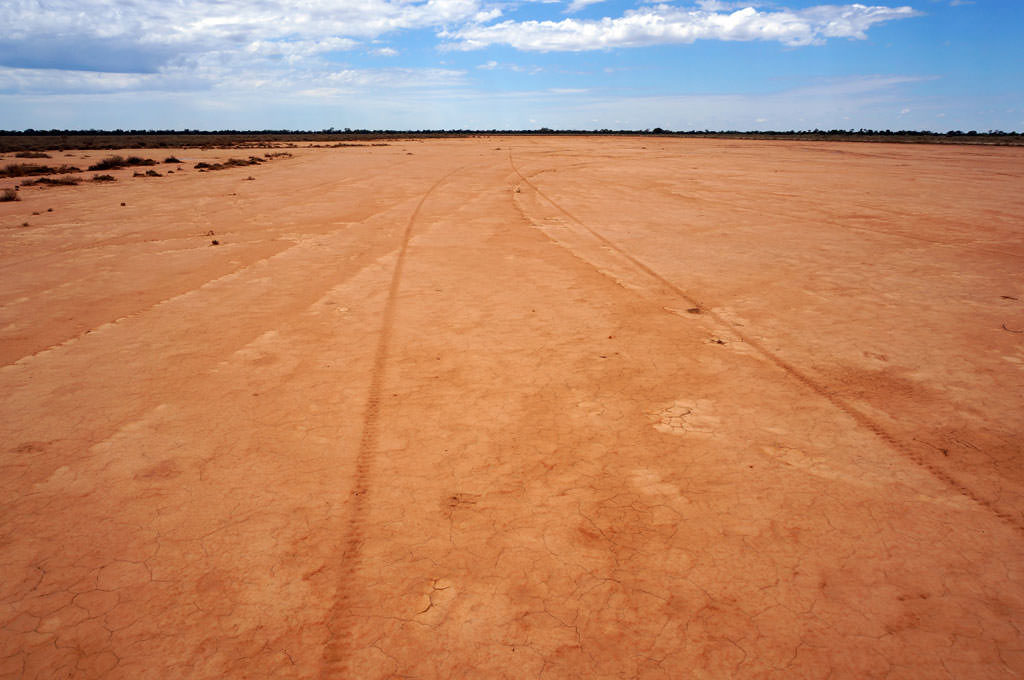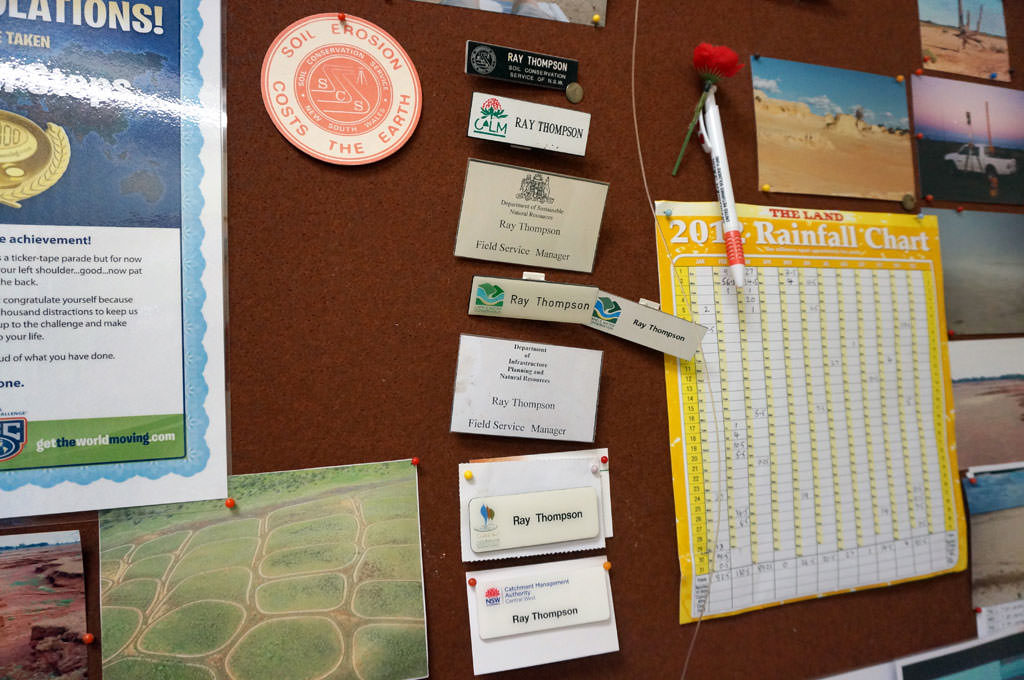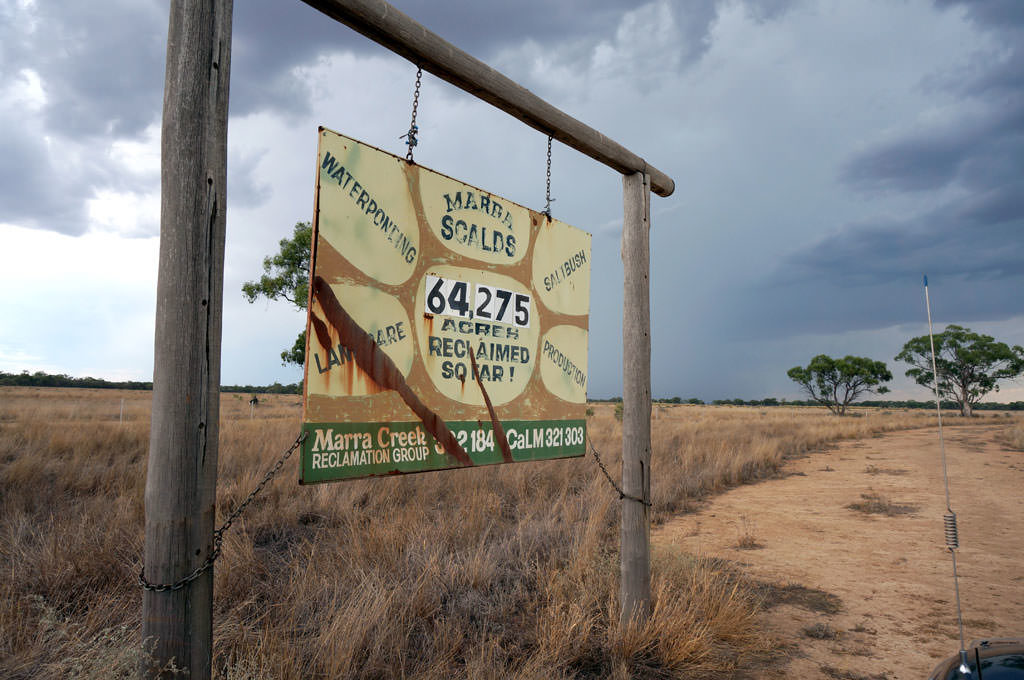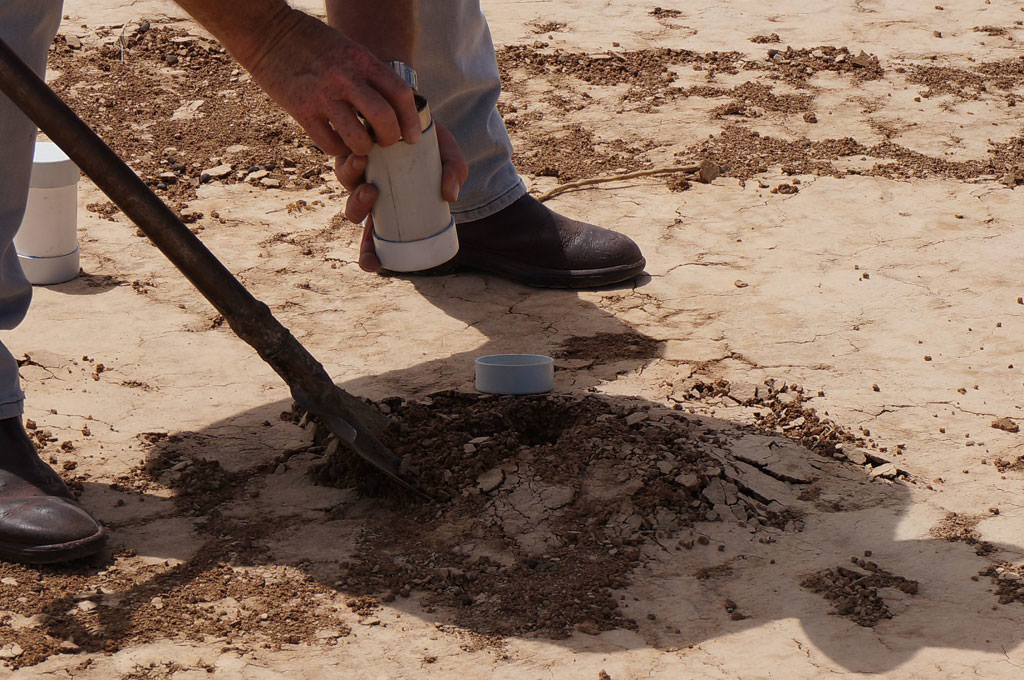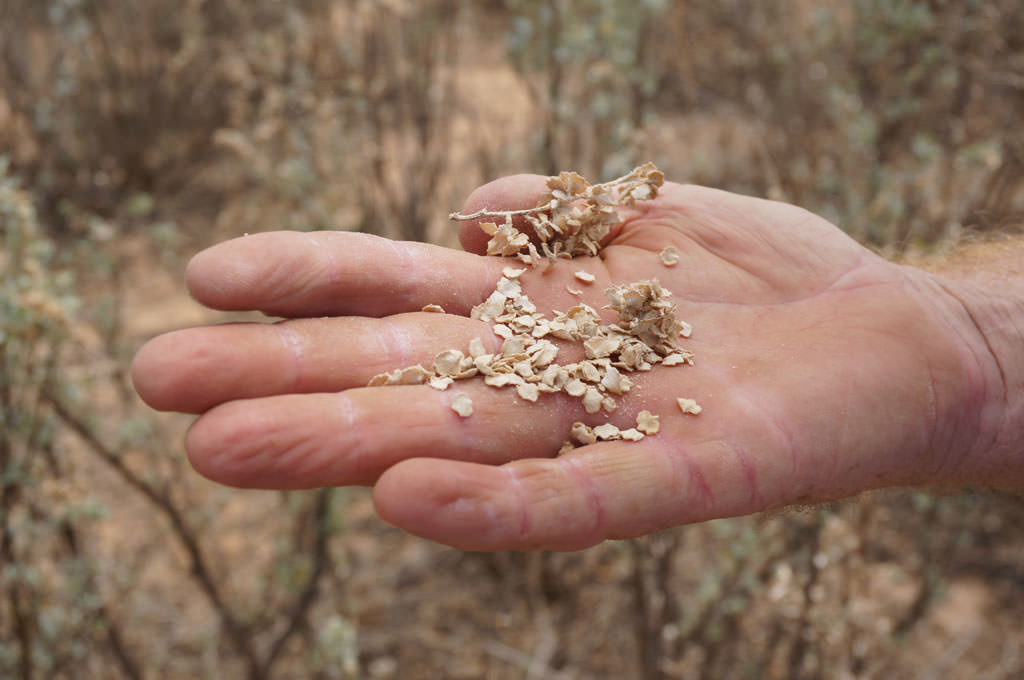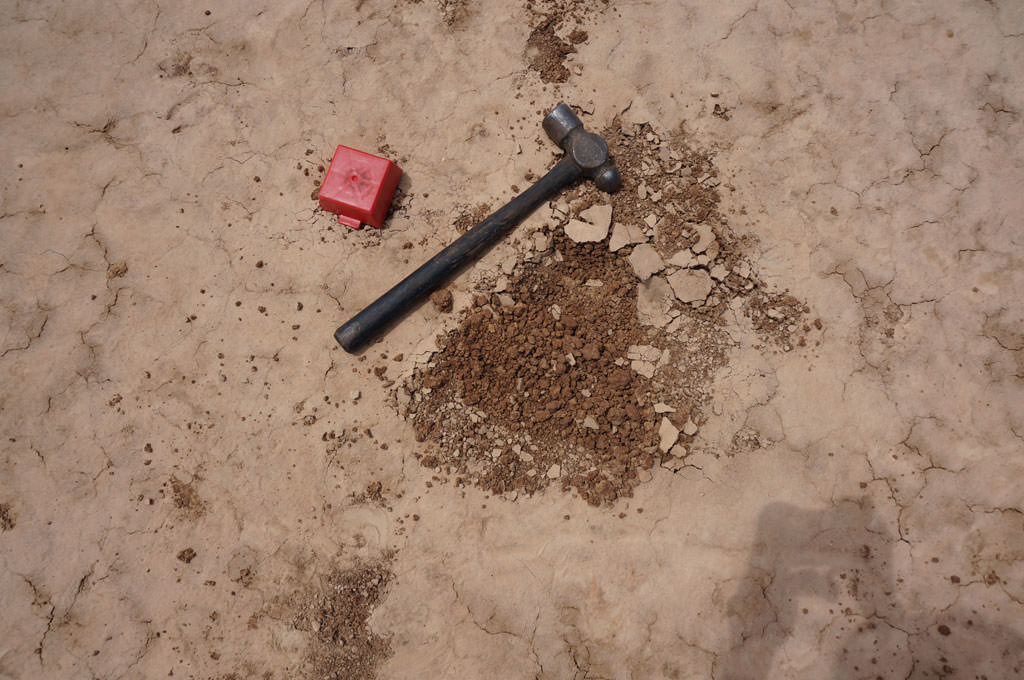Marra Creek waterponding
Marra Creek waterponding
Reclaiming scalded landscapes has become my lifelong work in the rangelands of New South Wales.
In 1984 I mapped out 100,000 hectares of scalded duplex soils in the Marra Creek district north of Nyngan, New South Wales. Duplex soils are distinctive for their loose, sandy loam dry topsoil layer that rests on dense subsoil. The loose soil is vulnerable to erosion and vast tracts of land out here have scalds. I believed that these eroded landscapes could be reclaimed by the waterponding rehabilitation technique. Waterponds are shallow U-Shaped earth banks that retain water on flat scalds and help vegetation to establish.
The Soil Conservation Service’s Marra Creek Waterponding Demonstration Program ran from 1984 to 1988. It was so successful that it continued, and the waterponding technique has now reclaimed 37,000 hectares of scalded landscape, which is a win-win for the environment and landholders.
I have surveyed 74,000 waterponds since the program started. I’ve also spread the waterponding technique across the world. Through the Australian Aid program I have trained 71 African trainees from 28 African countries. I‘ve spoken on waterponding at international conferences in India, Argentina, China, Canada and Australia.

Image: Cameron Muir
For some reason unknown from the first day of my waterponding career, I began a logbook of every day that I went into the field. I recorded the property name, amount of waterponds laid out, number of surveyed hectares, laser hours, tine marker hours and average waterpond bank length.
This book has become my living bible of facts and figures for the last 32 years, hence why I know how many waterponds have been surveyed, how many hectares have been rehabilitated and how many properties have been waterponded.
The book has become battered and full with so many entries, the second book has carried on.
From the first Number 1 waterpond that I surveyed in 1984, to the 74,000th waterpond, my passion has not changed; that desire to revegetate the landscape has remained my number one focus.
The Marra Creek district is unique in landscape and people, it has engulfed my working life with so many highs and given me opportunities to spread the waterpond success across the world.
The Marra Creek duplex soil is so responsive to change – it is like birth, you plant the seed and rehabilitate, and the vegetation growth is mind blowing.
I have a sense of awe when I walk around out here, knowing it is possible to take this clay pan – land that has lost 30 centimetres of top soil, that is barren and denuded of life, and just continuing to blow and wash away – and regenerate it into a landscape of waving native grasses, perennial saltbushes, full of wildlife and birdsong. When I see that the dust storms have stopped, the erosion has stopped, and the landscape is back in production, you can’t beat that feeling. This is a place that has been given a second chance of life.
When I walk onto a clay pan with a landholder and he or she says, “What can I do with this?” I begin thinking about what this scalded site is going to look like in five years’ time, covered in saltbushes and grasses, reborn earth to enhance the environment for a far better functional landscape.
You just have to get down and get your hands dirty. It will not happen by sitting behind your desk, you have to get out in the paddock every day, and I set goals each day to cover 50 hectares of scald every time I go out. I have just chipped away at it and rode the waves over the 36 years of rehabilitation work.
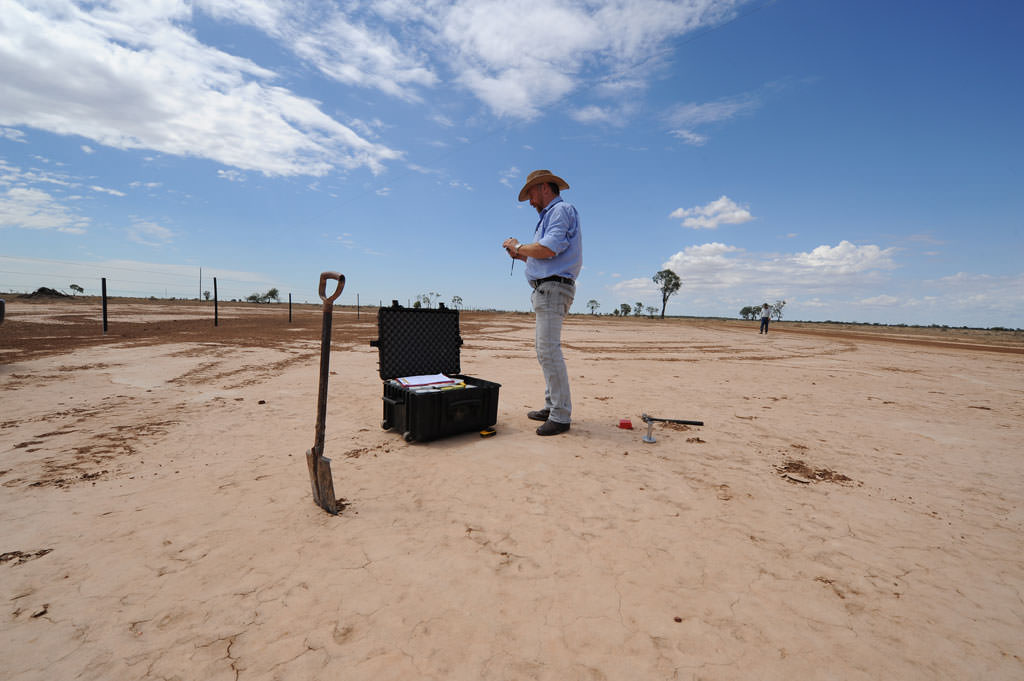
Image: Cameron Muir
The Soil Conservation Service still exists, but seven department name changes later, I’ve been able to continue with the waterponding work, all the while using the same faithful equipment that I started with. The Marra Creek Waterponding Demonstration Program owned the laser equipment which halted each old department selling-off all your equipment each time we changed department names (thank god for that).
I believe that the equipment has made this job the success that it is. I know there are a lot of components in the job that have to be brought together – reading and understanding the landscape, survey skills, timing, survey equipment and back-up – but the laser equipment virtually talks to me inside the cab of my ute. I treat it well and it treats me well. The two of us have been together every day for 32 years. I hit the switch and the laser springs to life, more numbers today. Without this equipment, I would have never walked the 15,762 kilometres that the tine marker has marked behind my laser truck.
Two days that I will never forget, back in 2005: I was surveying waterponds at “Melrose”, Frank and Rochelle McKillop’s place. At the end of the day I handed Frank the waterponding survey sheet with all the ponds drawn on it so he could build them with his road grader.
Frank took the sheet and away I went.
A month later, Frank rang up and invited me out to do the final inspection on the new fence and the waterponds he had built. That was fine, so out I went. When I arrived at the “Melrose” homestead, only Frank was there, nobody else, which was a bit strange but off Frank and I went to do the inspection along the shiny new fence. Then I saw way over in the distance that there were four-wheel drives parked out in the middle of the waterponds.
Frank said, “Just head over to the vehicles.”
The gratitude of the landholders for the job I was doing really hit home to me. I appreciated Frank’s actions, putting that pond into history, for the recognition of all those days just going out surveying day-in-day-out, working to regenerate the environment.


